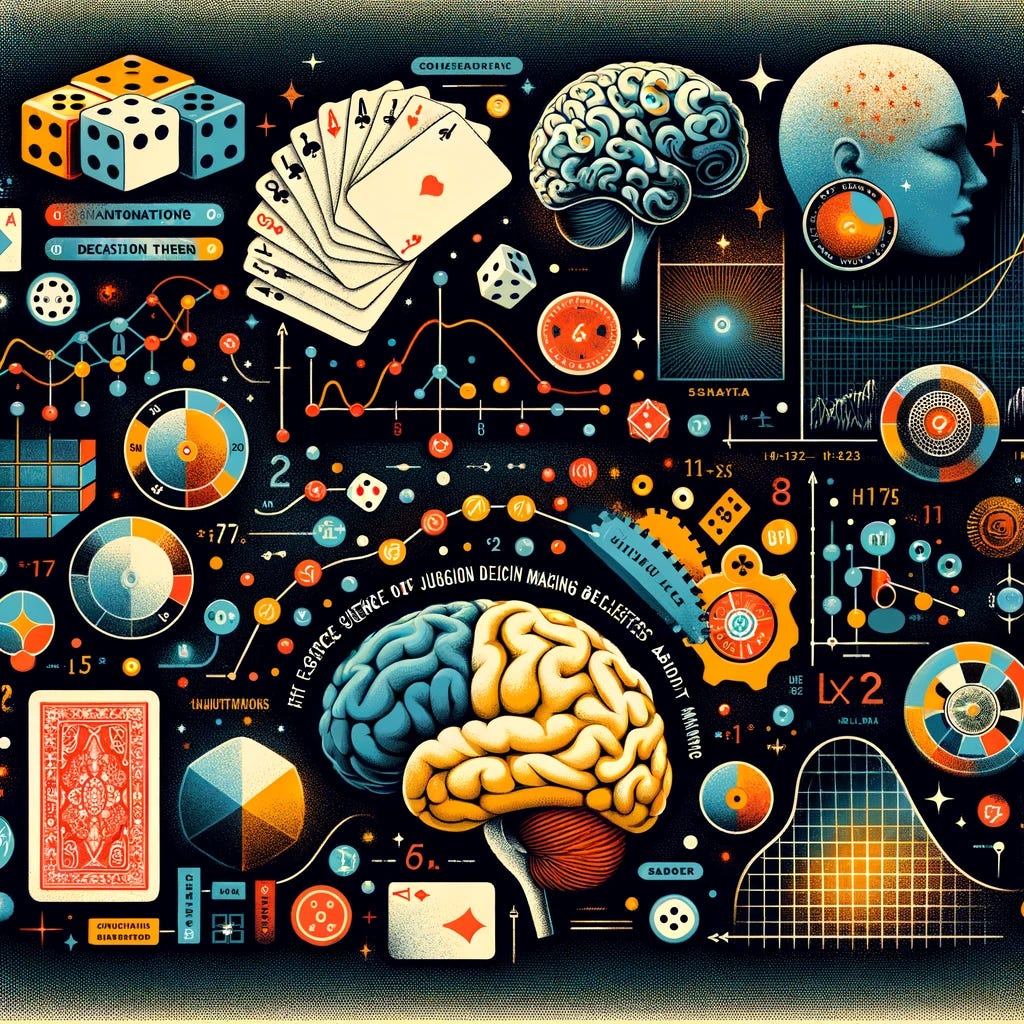What is this Substack about (2)? What the science of judgment and decision making (J/DM) tells us about gamblers’ strategies and beliefs about winning
Theme 2 of 4
This Substack is about four inter-related themes each of which will be described in a separate brief essay. The first theme was described in the previous post here. The current post describes the second theme: what the science of judgment and decision making (J/DM) tells us about gamblers’ strategies and beliefs about winning.
Gambling has a long and rich relationship with the science and theory of judgment and decision making:
Probability theory. It was a question from a gambler about how to divide the winnings in a prematurely-ended game of dice that is widely credited with Pascal and Fermat’s development of the early mathematics behind probability theory in the 17th century.
Expected Utility Theory. In the 18th century, a simple gamble with a coin flip was central to the development of expected utility theory and the idea of marginal utility.
Rational Choice Theory. In the 1940s and 50s that utility theory and the gambling metaphor it depends on was extended to contemporary rational choice theory (refined expected utility theory, game theory, and subjective expected utility theory) which forms the basis of economic models of decision making.
Descriptive Decision Theory: Even among behavioral economists and psychologists who recognize that people systematically violate economic models of rational choice, those gambling-metaphor-informed normative models continue to serve as standards against which actual decisions are evaluated and alternative models are established.
The experimental study of behavioral decision making. Finally, simple gambles have been a centerpiece in controlled experimental studies by cognitive psychologists and behavioral economists seeking to test the extent to which decisions correspond to rational choice theory and to the development of theories that explain why people deviate from those normative models, including, but not limited to prospect theory and some of the work in the “heuristics and biases” tradition.
Given this deep connection between gambling and the science and theory of judgment and decision making, it should not be surprising that this research and theory has a lot to say about gamblers strategies, whether or not they work, and why gamblers often use strategies that do not work and endorse beliefs that are not true. The essays in this Substack will regularly refer to that research and theory.

